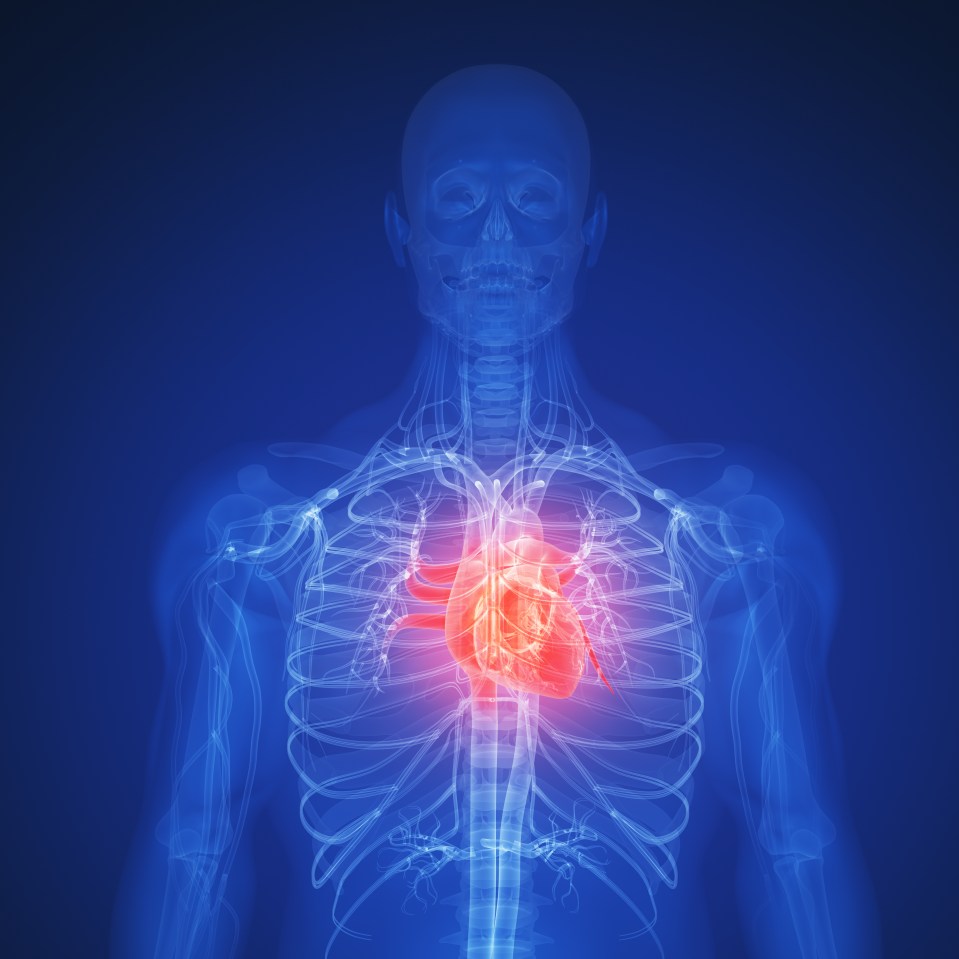How to tell the difference between a heart attack and a stroke – and the signs you should NEVER ignore

HEART attacks and strokes are both life-threatening emergencies.
Yet, the quicker they are detected, the greater a person has of surviving their ordeal. Here are the signs to look out for...
What is a heart attack?
A heart attack occurs when the heart muscle is starved of oxygen-rich blood.
The lack of oxygen causes the muscle to be damaged.
Heart attacks can also be referred to as myocardial infarction, coronary thrombosis or acute coronary syndrome.
Another, less common cause of a heart attack, is where one or more of the coronary arteries tear.
WHAT IS A HEART ATTACK?
- A heart attack happens when the heart muscle is starved of oxygen-rich blood, often as a result of a blockage
- The lack of oxygen causes the muscle to be damaged
- Most heart attacks are triggered by coronary heart disease, the British Heart Foundation notes
- This is when the coronary arteries – the blood vessels that supply the heart muscle with oxygen-rich blood, become narrowed by a gradual build-up of fat inside the walls
- If a piece of this fatty material breaks away, it can cause a blood clot or blockage to form. If it then blocks the coronary artery it can cut off the blood supply to the heart
What are the signs of a heart attack?
Being able to quickly recognise the signs of an impending heart attack, could save a person's life.
The symptoms will likely vary, person to person, but there are some common signs.
They include:
- chest pain - a tightness, heaviness, pain or burning sensation in the chest
- pain the arms, neck, jaw, back or stomach - the pain will be severe, rather than just uncomfortable
- sweating
- feeling light-headed
- becoming short of breath
- feeling nauseous or vomiting
What is the difference between a heart attack and a cardiac arrest?
While both conditions are potentially deadly, they are not one and the same thing.
A heart attack is caused by a sudden loss of blood flow to the heart muscle, causing it damage.
In contrast, a cardiac arrest is when a person's heart stops pumping blood.
It is possible for a heart attack to trigger cardiac arrest.
Someone suffering the latter will be unconscious, and won't be breathing normally.
What is a stroke?
A stroke is a brain attack, and happens when the blood supply to the brain is interrupted.
Blood carries oxygen to the brain, and without it brain cells will begin to die off.
This is what causes the damage to other parts of the body, in stroke victims - for example speech problems or a weakness on one side.
There are two different types of stroke - ischaemic and haemorrhagic.
WHAT IS A STROKE?
- A stroke is a brain attack, and happens when the blood supply to the brain is interrupted
- There are two different types of stroke
- An ischaemic stroke is the most common, and is caused by a blockage cutting off the blood supply to the brain
- In contrast a haemorrhagic stroke is caused by bleeding in or around the brain
- Furthermore, there is such a thing as a mini-stroke, or transient ischaemic attack (TIA)
- The blockages that trigger a TIA are temporary and therefore the symptoms last for a much shorter period of time
In a similar way to a heart attack, a stroke is caused by a narrowing of the blood vessels.
As we age our arteries become harder and narrow, increasing the chance of a blockage.
Certain medical conditions, as well as lifestyle factors such as smoking and being obese, increase the risk of a stroke.
All strokes are different, for some they can be relatively minor while for others they can prove catastrophic.
Around one in eight people die within 30 days of suffering a stroke, according to the .
This is why it is so important that people recognise the signs, as the quicker a person receives treatment the higher their chances of surviving.
What are the signs of a stroke?
If you suspect you or a loved one is suffering a stroke, it is vital to act FAST.
- Facial weakness - can the person smile? Has their face fallen on one side?
- Arm weakness - can the person raise both arms and keep them there?
- Speech problems - can the person speak properly, and understand what you're saying. Is their speech slurred?
- Time to call 999
If a person fails any one of these tests, it is vital you call 999 immediately.
Other symptoms of a stroke include:
- sudden weakness or numbness on one side of the body
- difficulty finding words
- sudden blurred vision or loss of sight
- sudden confusion, dizziness or unsteadiness
- a sudden and severe headache
LATEST IN HEALTH
What are the common risk factors?
There are some risk factors, such as age, genetics, family history, race and gender, that are predetermined and out of our control.
However, there are also a number of lifestyle factors increase a person's risk of suffering both a heart attack and stroke.
They include:
- smoking
- high blood pressure
- high cholesterol
- being overweight or obese
- diabetes
- poor diet
- lack of exercise
- drug and alcohol abuse
















